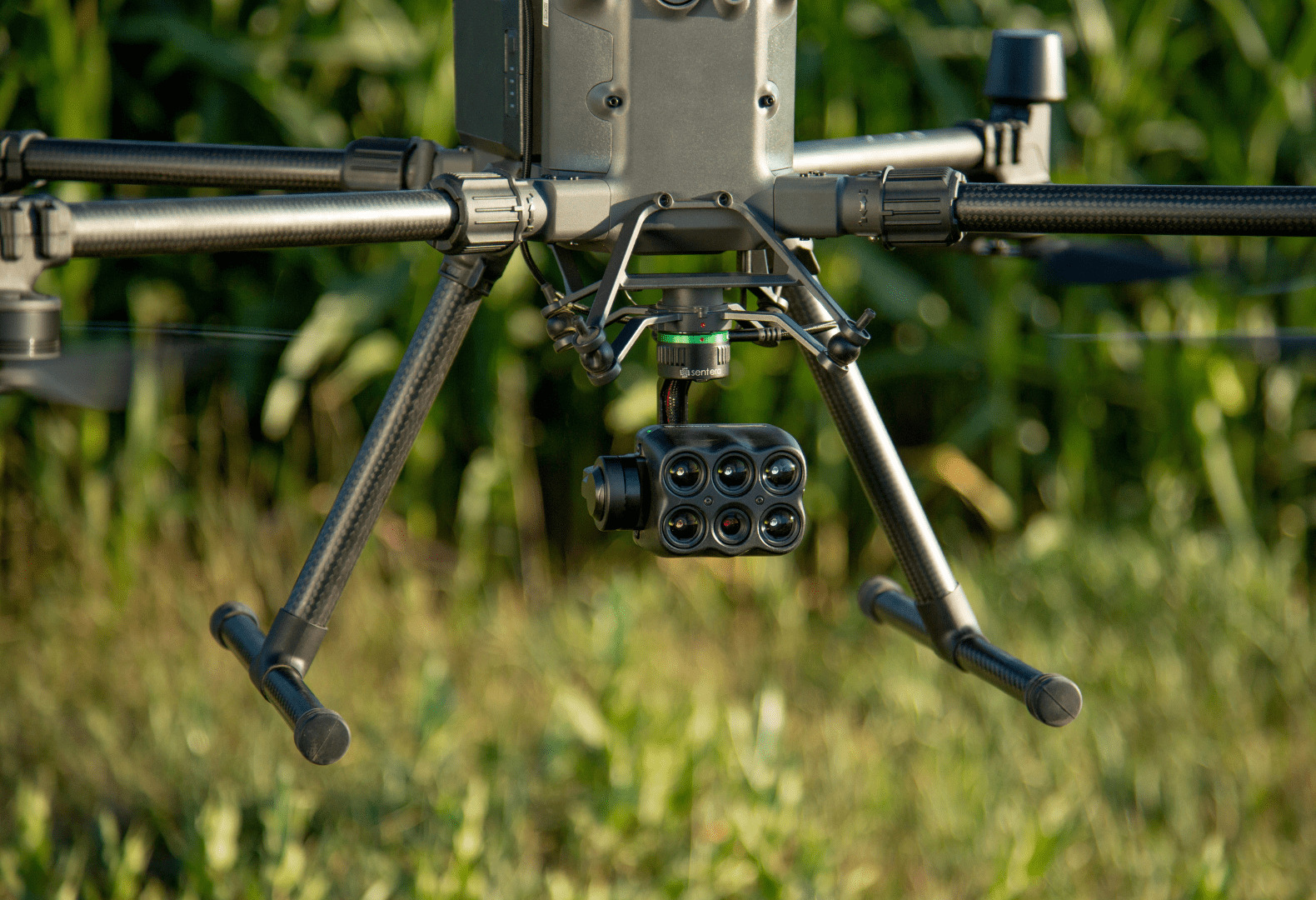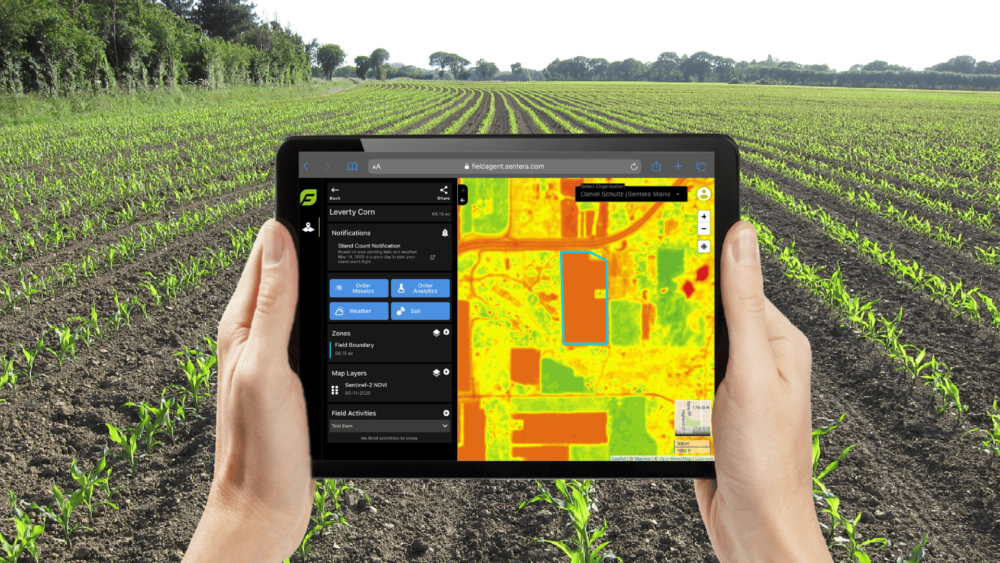Weed control has been relatively straightforward for the last couple decades. Seed traits were engineered to tolerate glyphosate herbicide (e.g., Roundup). Farmers planted the seeds, blasted the field with glyphosate, and watched the weeds die and the crops survive.
But while herbicide-resistant weeds have existed since the mid-twentieth century, their numbers have especially proliferated over the last decade. Overuse has reduced chemical solutions’ efficacy at the same time weeds have evolved to tolerate herbicides such as glyphosate. This is happening all over the world.
Enter precision weed management, a catch-all phrase for the various tools and technologies that promise weed control with less reliance on herbicides (or none, in some cases).
Minnesota-based Sentera recently entered this segment with an aerial scouting technology that can detect weeds and generate data about when and where to spray, and with which chemical cocktail. [Disclosure: Sentera is a portfolio company of AgFunder, AFN’s parent company.]
The company started as a platform diagnosing high-resolution imagery, converting it into agronomic data on things like plant nutrition and field health. The idea was, and remains, to assist agronomists in their decision-making processes throughout the season via precision ag tools; its newly launched weed tech is very much along those lines.
The sense-prescribe-act method vs. see-and-spray
Agtech companies of all sizes are currently trying to reduce herbicide use, from robots that zap weed roots to John Deere’s See & Spray tech, which uses on-boom camera vision and machine learning to detect weeds and activate sprayer nozzles.
Sentera and Deere launched a partnership in 2016, part of which was to use the former’s tech to develop weed maps that plugged into the latter’s precision applicators.
“Very publicly, Deere went a different direction [with See & Spray] to do more on machine based sensing approach or approximate based approach,” says Sentera CEO Brian Wenngatz. “At that time, we realized that our best possible path to bring our technology to market was through partnership with an agronomic partner that can actually make prescriptions for chemistry.”
He says Sentera’s partners are “various multi-national seed and chem companies” but declined to name specific organizations.
Sentera launched its precision weed technology, called Aerial WeedScout, late last year. Building upon the original platform, the WeedScout involves low-cost drones and one high-end sensor that can map the weeds in a field and generate a prescription for herbicide application. The idea is to target only those areas of a field that actually need spraying. The company claims it can reduce herbicide use by up to 70%.
Taipale says the advantage of a system like his company’s is that farming operations can know what weeds are in the field, and how many of them exist, ahead of time.
“If I’m a retailer and I have to move a sprayer and a bunch of chemicals to the field, what I don’t want to do is move twice as many chemicals because I might need only some of them.”
He calls the Sentera method a “sense-prescribe-act” workflow versus a “see-and-spray” operation.
“We know the day before, so from a logistics perspective, it’s just a person going out with a drone, then the retailer can just put the chemistry on those trucks. It’s much much cheaper than taking a million-dollar sprayer and running it. Nobody’s going to take that asset and run it out to the field just to figure out what’s going on. They’re going to spray because it’s so expensive to be there.”
“If you’re rolling through [the field] at 13 or 14 miles per hour, you need a fleet of about 25 sprayers to serve 200,000 acres,” adds Wenngatz. By contrast, “Ariel weed scouts don’t need to carry sensors every 18 inches on the boom. And knowing where the weeds are beforehand means sprayers can go through the field at full speed, and you need fewer of them than you wold with a proximal-based solution.”
Taipale notes that there are workflows where Aerial WeedScout and See & Spray might easily complement one another. As in most of farming, it depends on the individual operation.
John Deere confirmed in an email to AgFunderNews that its See & Spray technology only knows what weeds are present once the machine is in the field. The company also noted that its technology can be retrofit onto a five-year-old sprayer for $25,000 including installation. The company declined to comment further.
Meanwhile, Sentera says its algorithm is now performing at a very high rate. “Our target was 95% detection of quarter-inch weeds; the algorithm performed at a 98% rate in 2023 field trials,” notes Wenngatz.
“We also have some IP we have developed that allows the workflow to turn around a prescription in 24 hours, which is really important to the advantages of a sense-prescribe-act workflow.”

Herbicide reduction: ‘What nature isn’t doing, regulatory agencies are’
Sentera’s venture into the weeds comes as herbicide resistance increases and new legislation complicates farming operations.
No chemical solution currently exists that’s on par price-wise with glyphosate.
“There’s a mix of seed traits that have to be engineered to get around herbicide-resistant weeds,” says Taipale “And generally instead of just applying a blanket application of one type of chemistry, there is a mix that is customized to the geography of the region, or even the field. From an economic perspective, it’s going get more expensive.”
Weed control costs about $60 to $70 per acre today, he says. “If we look at 2030, if we’re going to [spray] the way we do now, that looks like $110 an acre instead of $60.”
As Taipale suggests, we’re unlikely to be broadcast spraying in 2030 the way we do now because of regulatory pressures.
“What nature isn’t doing [in terms of herbicide reduction], the regulatory agencies are.”
For example, just this month, a US court banned three dicamba-based weedkillers from BASF, Syngenta and Bayer; the chemical has been known to drift long distances and is linked to damage across millions of acres of farmland in the US.
All of these factors are making targeted application of weeds “front and center,” says Taipale.
“We already know that by applying some digital technology, we can take more chemistry off that field. So it’s kind of a certainty that selective applications will become part of the future digital and is going to pull wallet share away from chemical applications. The question is just what’s the modality.”
What’s next?
Sentera will work with six large multinational partners in 2024 to “test the technology at a much larger scale,” says Wenngatz.
“We were in 100 acres or so last year. We’re going to be scaling on thousands of acres and getting feedback from growers.”
He adds that the company is also thinking of “smaller growers that want to be able to leverage this technology but don’t want to necessarily bring out a huge piece of equipment.”
Drone tech, too, will continue to improve from both a data collection standpoint and the cost to acquire that data.
“There will be a scenario in the future where these drones are just coming out of boxes and you can fly every day if you want. You don’t need to have a person there in order to fly the drone. So there are lots of advantages, not just near term but long term to this type of workflow.”




